Make a luxurious chicken liver pâté at home! This easy recipe features butter, shallots, cognac, and heavy cream for a rich spread perfect for entertaining.
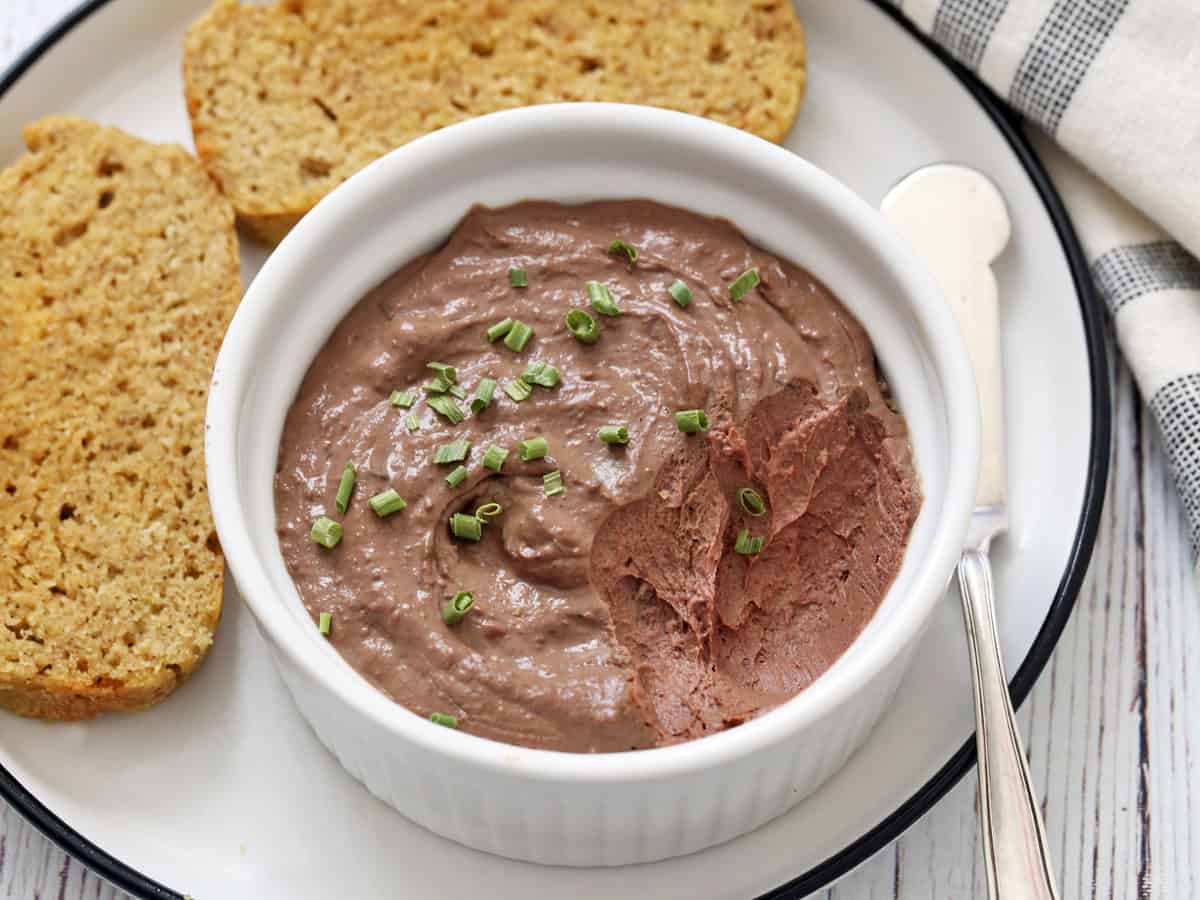
If you're curious about internal organs and would like to give them a try, chicken livers are a good place to start because their texture is pleasant and their flavor is mild. They're a better choice for beginners than beef heart or chicken hearts, which are more boldly flavored. Turning the livers into a rich pâté, inspired by Julia Child's classic recipe, makes them even more palatable and is surprisingly easy to do at home.
Ingredients

See the recipe card for exact measurements. Here are my comments on some of the ingredients.
- Butter: Any butter will be great here, but creamy European-style butter is especially good.
- Fresh chicken livers: I usually get them at Whole Foods. They are also available in many American supermarkets.
- Shallots: They are sweeter and milder than onions, making them perfect for this recipe.
- Cognac: Its flavor greatly enhances the flavor of the pâté. A good brandy is another option.
- Heavy cream: Another important ingredient that adds creaminess and silkiness.
Instructions
Scroll down to the recipe card for the full instructions. Here are the basic steps for making this recipe:
Cook the livers and shallots in butter and transfer them to the food processor.

Reduce the cognac and add it to the food processor. Add heavy cream, spices, and butter, and process until light and fluffy.

Divide the mixture evenly between individual ramekins. Cover and refrigerate the pâté for at least two hours before serving.

Olive Oil Variation
On occasion, instead of 5 tablespoons of butter, I use 3 tablespoons of extra-virgin olive oil. This is definitely a departure from tradition, but I like the robust flavor and don't mind the softer texture. This version is shown in the photo below.
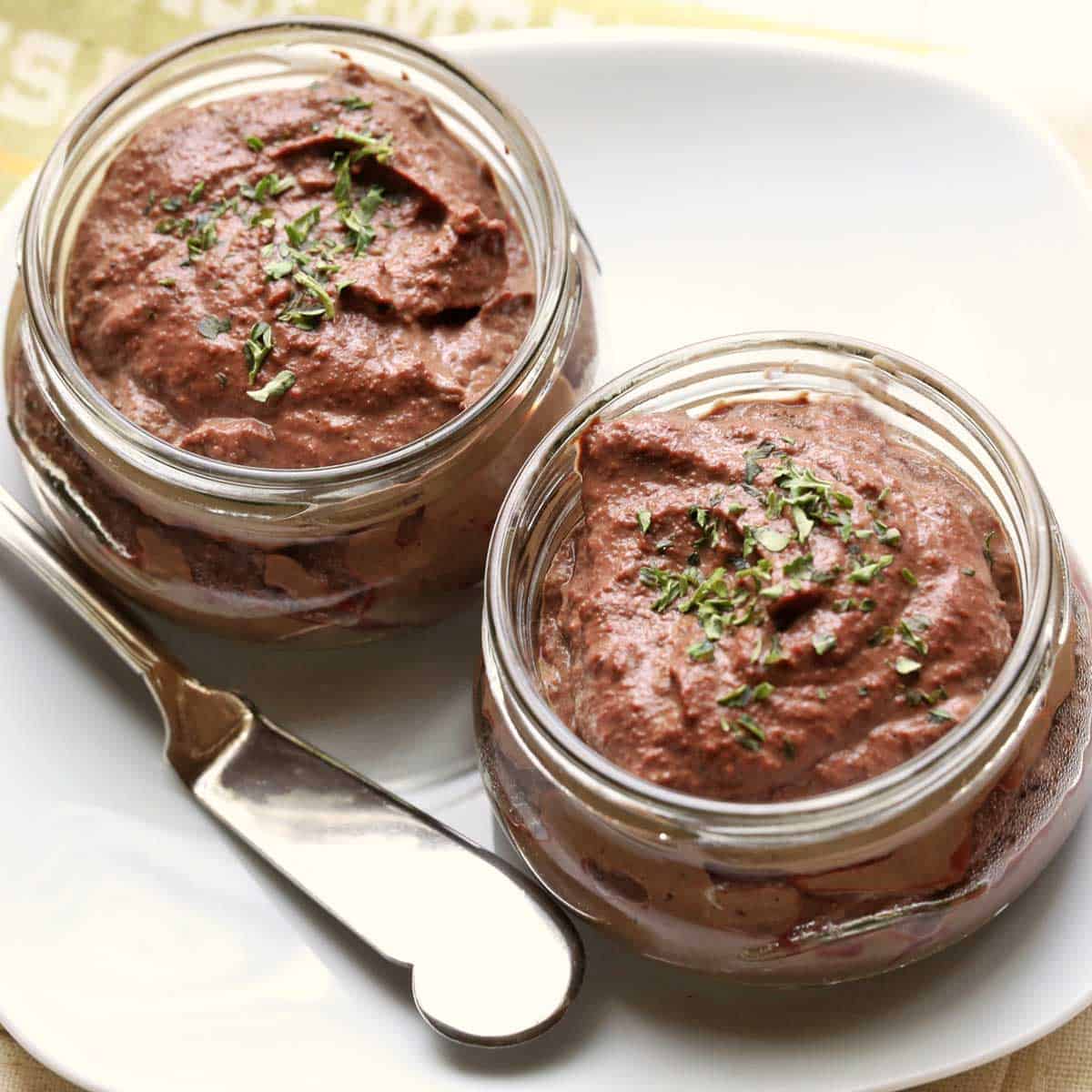
Recipe Tips
- Don't overcook the livers. They should still be pink in the middle. Properly cooked chicken livers are tender and flavorful, while overcooked ones are tough and gummy. However, the CDC says they should be cooked to 165°F.
- Chicken livers will splatter and even burst if added to a too-hot pan. So make sure to use medium heat and don't wait too long before adding the livers to the pan.
- Don't try to eat the pâté as soon as it's ready! It's not good when it's still warm. It needs time to rest, at least 2 hours in the fridge. If refrigerating overnight, remove the pâté from the fridge 30 minutes before serving to allow it to soften.
Recipe FAQs
I don't rinse them. I remove the connective tissue, as shown in the photo below, and pat the livers dry with paper towels.
You could, but the pâté's flavor won't be as good. It really is an integral part of this recipe.
No. Milk is too watery. The high fat content and richness of heavy cream are an important part of this recipe.
You can keep this pâté in an airtight container in the fridge for up to three days. Remove it from the fridge 30 minutes before serving so it's not refrigerator-cold. I don't recommend freezing it.
Serving Suggestions
The classic way to serve chicken liver pâté is with toast, as shown in the image below.
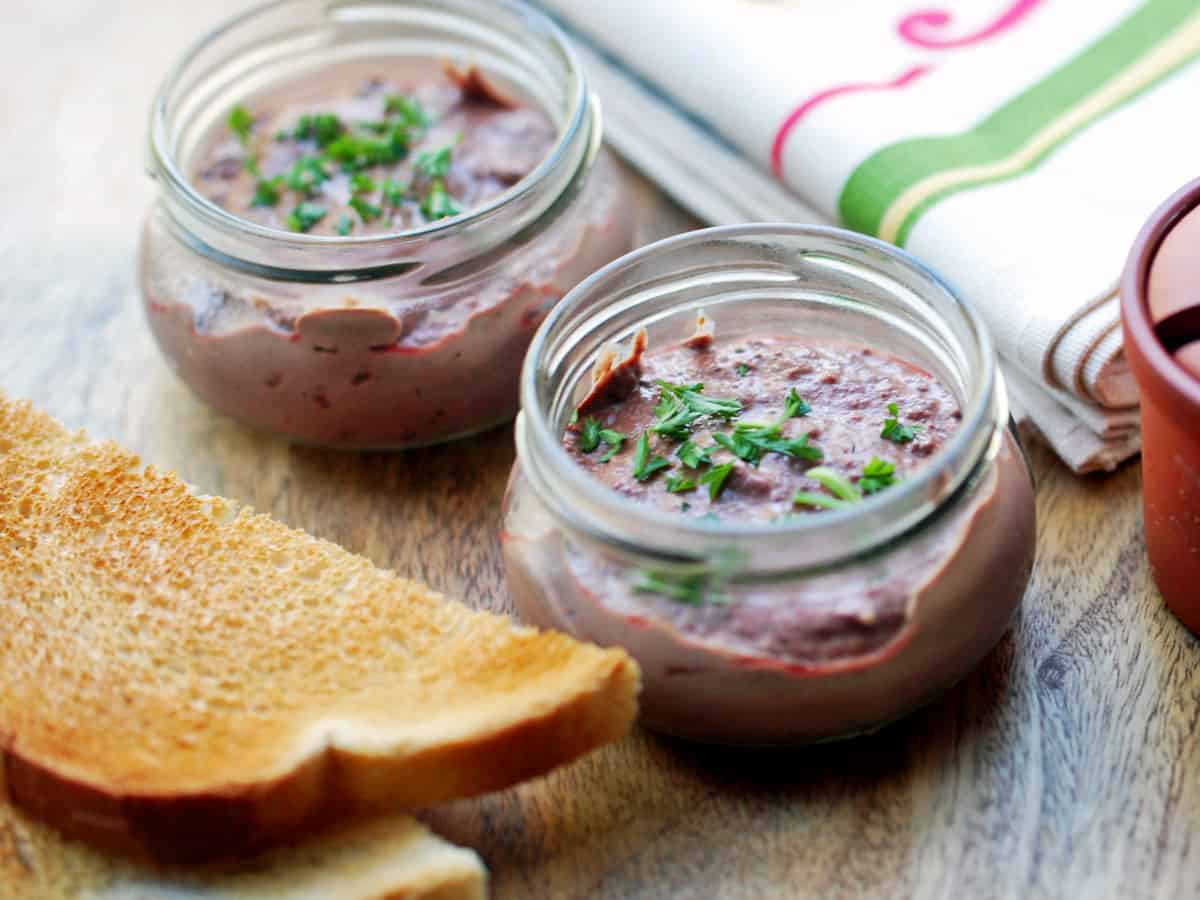
For those of us on a low-carb and/or gluten-free diet, there are several other options, including fresh-cut vegetables, almond flour crackers, and almond flour bread, as shown in the two photos below.
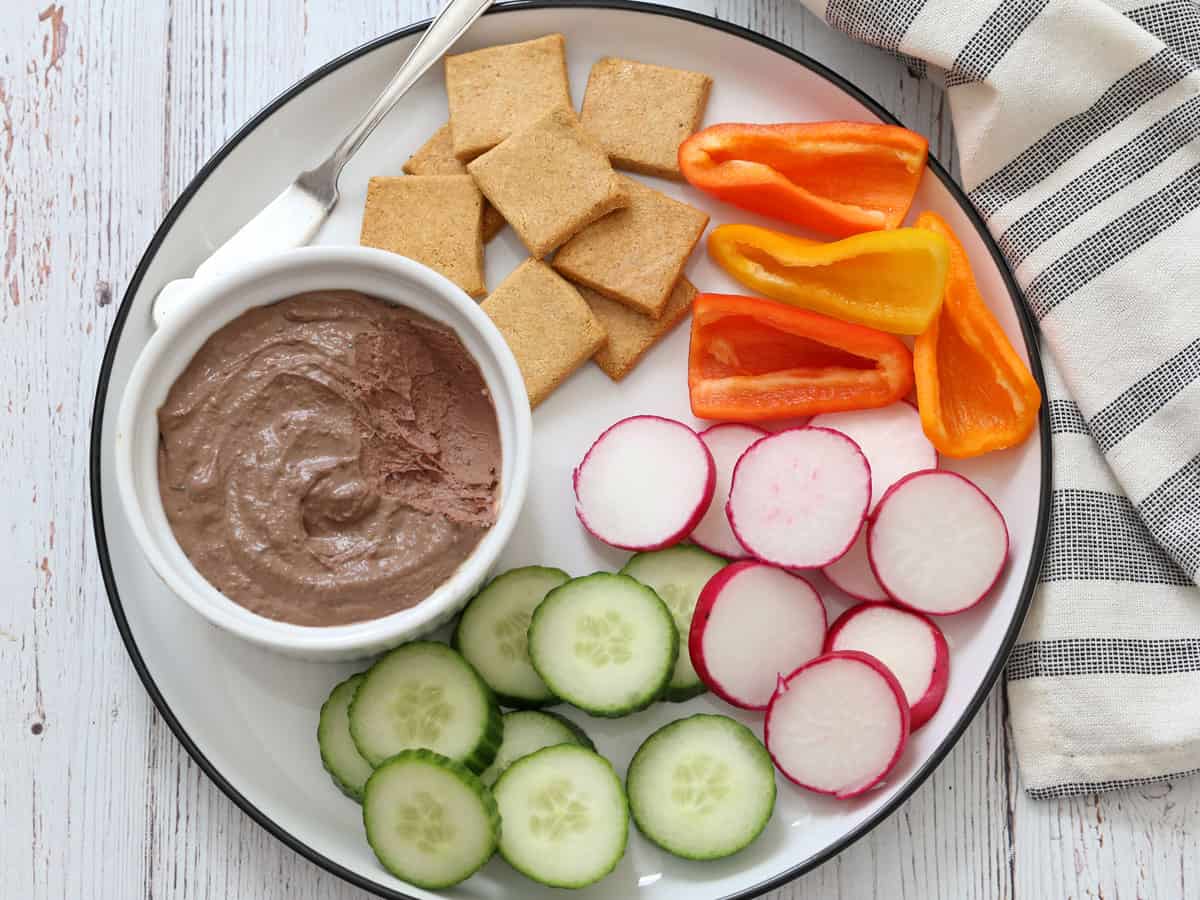

Recipe Card
Silky Chicken Liver Pâté
Video
Ingredients
- 5 tablespoons salted butter - room temperature, divided
- 1 pound chicken livers - connective tissue removed
- ½ teaspoon sea salt - divided
- ¼ cup shallots - minced
- ¼ cup cognac - or brandy
- ¼ cup heavy cream
- ⅛ teaspoon black pepper
- ⅛ teaspoon ground allspice
- ⅛ teaspoon dried thyme
Instructions
- Melt 1 tablespoon of butter over medium heat in a large, 12-inch skillet. Add the livers in a single layer. Sprinkle them with a pinch of salt. Cook for 2-3 minutes on each side, just until no longer raw - the center should remain pink (see notes below). Transfer the cooked livers to a plate to cool slightly.
- Add the shallots to the skillet and cook until golden brown, about 3 minutes. Transfer the livers and shallots to the food processor.
- Add the cognac to the skillet. Increase the heat to high and cook, deglazing the pan, until the cognac is reduced to 3 tablespoons, about 1 minute.
- Turn the heat off and use a rubber spatula to transfer the contents of the skillet to the food processor. Add the heavy cream, the remaining salt, black pepper, allspice, and dried thyme to the food processor bowl. Cover and process on high for about 1 minute, until the liver turns into a smooth paste.
- Add the remaining 4 tablespoons of butter and process on high for 30 seconds, until well-incorporated. Continue to process for 1 more minute until the mixture is light and fluffy.
- Divide the mixture evenly among four individual containers (such as small jars or ramekins). Cover and refrigerate for at least 2 hours before serving.
- Serve with toast or (for a low-carb option) almond flour bread.
Notes
- This recipe makes 2 cups. A serving is ½ cup.
- The CDC recommends cooking chicken livers to 165°F, which is well done.
- Chicken livers will splatter and even burst if added to a too-hot pan. So make sure to use medium heat and don't wait too long before adding the livers to the pan.
- Don't try to eat the pâté as soon as it's ready! It's not good when it's still warm. It needs time to rest, at least 2 hours in the fridge. It's best to make it a day ahead and refrigerate it overnight. This helps firm up its texture and ensures that the flavors are melded. If refrigerating overnight, remove the pâté from the fridge 30 minutes before serving.
- You can keep the pâté in an airtight container in the fridge for up to three days. Remove it from the fridge 30 minutes before serving to allow it to soften. I don't recommend freezing it.
Nutrition per Serving
Save this Recipe!
We will also add you to our weekly newsletter. Unsubscribe anytime. See healthyrecipesblogs.com/privacy/ to learn how we use your email.
Disclaimers
Most recipes are low-carb and gluten-free, but some are not. Recommended and linked products are not guaranteed to be gluten-free. Nutrition info is approximate. Please verify it independently. The carb count excludes non-nutritive sweeteners. Please read these Terms of Use before using any of my recipes.












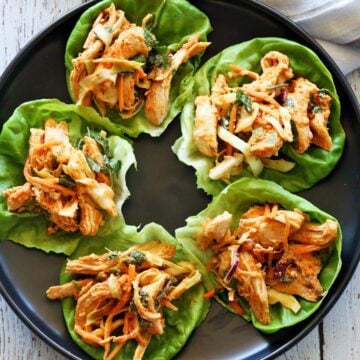

Barbara says
Can I freeze the extra chicken liver pate?
Vered DeLeeuw says
Hi Barbara,
I don’t recommend freezing this pâté because its texture changes noticeably once thawed. The high butter and cream content can cause the mixture to separate or become grainy after freezing, so you lose that smooth, velvety finish.
Christophe Boulianne says
Hi, Can this be done using a pestle and mortar, I do not use food processors.
Vered DeLeeuw says
Hi Christophe,
You can make it with a pestle and mortar, but it will be more rustic in texture. If you’re okay with a coarser pâté, go for it. Make sure the livers are very soft and warm when you start, which will make the mashing easier. It won’t get quite as silky as with a food processor, but it will still be delicious.